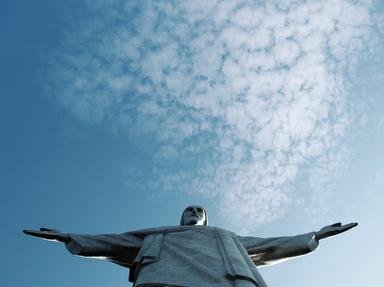Quiz Answer Key and Fun Facts
1. By 1916 the Dominican Republic had been in a state of civil war for five years (having been close to civil war many years before that). What were the two major factions vying for power in 1916, before the U.S. government established a formal (illegal) military government over the country in November of that year?
2. One of the most well-known (and notorious) characters of Dominican history is General Rafael Leonidas Trujillo Molina, who would become dictator over the country within 6 years of the end of U.S. occupation. He got his start by joining the U.S.-created military (the Guardia Nacional Dominicana, or GND), however, in what year?
3. The first U.S. military governor of the Dominican Republic was, ironically, only a captain of the U.S. Navy at the time he took the post. He was also the man who named the military government in November 1916. Who was he?
4. In this year during the U.S. occupation, when many countries worldwide were suffering severe recessions, the Dominican Republic actually had a booming economy, called "La Danza de los Millones" ("The Dance of Millions"). During what year did the Dominican Republic reap most of the benefits of this economic boom?
5. Trujillo came to full power over the country in 1930, pursuing caudillo-type dictatorial policies and repressing the citizenry with a very strong U.S.-trained National Army. In 1937, on the orders of the openly racist dictator, Haitians were massacred primarily along which river?
6. When Fidel Castro came to power in the Cuban Revolution of 1959, he was very supportive of the Trujillo government and offered subsidies to help build up the Dominican military.
7. Rafael Trujillo was assassinated in 1961 (the anniversary of which is celebrated today in the Dominican Republic). The United States was not done with intervening--when civil war again threatened the country in the years after Trujillo's death, the United States intervened militarily under whose U.S. presidency?
8. Which man who gained his power primarily under the Trujillo regime came back to power in the presidency repeatedly in the decades following Trujillo's assassination and played a major role in Dominican politics until his death, even when he wasn't in the office of the presidency?
9. In what year did Cuba restore diplomatic relations with the Dominican Republic?
10. On May 24, 2004, the island of Hispaniola was hit by torrential rains and damaging floods. Of the following numbers, which most closely represents the death toll for the entire island?
Source: Author
socratessoul
This quiz was reviewed by FunTrivia editor
bloomsby before going online.
Any errors found in FunTrivia content are routinely corrected through our feedback system.

